


A Creative Path To Wellness

In the fast-paced, high-stress world we live in, the importance of mental health and well-being cannot be overstated. Stress, anxiety, and other mental health challenges can significantly impact our lives. Fortunately, a powerful and therapeutic tool has emerged as an effective way to promote mental health and emotional well-being: crafting.
Crafting is a versatile and enjoyable activity that involves working with your hands to create a wide range of projects, from knitting and painting to woodworking and pottery. While it may seem like a simple pastime, crafting offers a plethora of benefits for mental health and emotional well-being:
Stress Reduction: Engaging in crafting provides an opportunity to disconnect from the demands and stressors of daily life. The repetitive and focused nature of crafting promotes relaxation and reduces stress levels. It can serve as a form of active meditation, allowing your mind to temporarily escape from its worries.
Mindfulness: Crafting encourages mindfulness, which is the practice of being fully present in the moment. When you're immersed in a creative project, your focus shifts to the task at hand. This state of mindfulness can reduce symptoms of anxiety and depression and improve overall well-being.
Self-Esteem: Completing a craft project can provide a significant boost to self-esteem and self-worth. Seeing your creations come to life fosters a sense of accomplishment, pride, and a positive outlook on your abilities.
Distraction From Negative Thoughts: Crafting serves as a productive and enjoyable distraction from negative or intrusive thoughts. By focusing on the project, you can redirect your mental energy away from worries and concerns.
Social Connection: Crafting can be a social activity, allowing you to connect with others who share your interests. Joining crafting communities, attending workshops, or crafting with friends can provide a sense of belonging and reduce feelings of isolation.
Emotional Expression: Craft projects offer a creative outlet for emotional expression. Whether it's through painting, writing, or other crafts, you can channel your emotions and experiences into your creations, helping you process and cope with challenging feelings.
Neurological Benefits: Engaging in creative activities has been associated with changes in brain chemistry. These changes can lead to improved cognitive function, enhanced problem-solving skills, and a decrease in symptoms of mental health disorders.
To incorporate crafting into your mental health routine, consider the following tips:
Choose A Craft: Select a craft that genuinely interests you. Whether it's knitting, painting, or any other creative pursuit, your passion for the craft will make the experience more enjoyable and beneficial.
Start Simple: Begin with straightforward projects if you're new to crafting. As you gain experience and confidence, you can tackle more complex and intricate creations.
Set Realistic Goals: Be patient and realistic about your crafting abilities. Remember that the process itself is therapeutic, and the finished product is just an added bonus.
Create A Relaxing Environment: Find a quiet and comfortable space to craft. Set up your materials in an environment that promotes relaxation and mindfulness.
Share Your Creations: Consider sharing your creations with friends or family. Discussing your craft projects can foster a sense of connection and provide additional motivation to continue crafting.
Crafting offers a multifaceted approach to improving mental health and well-being. It reduces stress, promotes mindfulness, boosts self-esteem, serves as a distraction from negative thoughts, and encourages social connections. Crafting also provides a creative outlet for emotional expression and can lead to neurological benefits that improve cognitive function and problem-solving skills. By incorporating crafting into your life, you can embark on a creative path to mental health and emotional wellness.
A Tranquil Journey To Inner Peace
 The Essence Of Herb Garden Meditation
The Essence Of Herb Garden Meditation
Meditation is a practice that has been revered for centuries for its ability to calm the mind, reduce anxiety, and promote emotional balance. When combined with the natural beauty and fragrance of an herb garden, meditation takes on a whole new dimension. Herb garden meditation involves spending time amidst your herbal haven, embracing the serenity, and harnessing the therapeutic benefits of herbs.
Preparing Your Herb Garden
Before embarking on a journey of herb garden meditation, it's essential to create an inviting space. Your herb garden should be well-maintained, with vibrant herbs and a comfortable spot for sitting or lying down. A soft blanket, a cushion, or a garden bench can be an ideal choice to enhance your comfort. Ensure that your chosen spot is free from distractions and noise, so you can fully immerse yourself in the meditation experience.
The Meditation Process
Begin your herb garden meditation by finding a comfortable seated or lying position. Close your eyes and take a few deep, calming breaths. Feel the earth beneath you and the gentle rustle of the herb leaves. Let your senses absorb the natural aromas, the warmth of the sun, and the soft caress of the breeze.
As you breathe in, focus on the scents around you. The invigorating aroma of basil, the calming fragrance of lavender, or the zesty scent of mint can all inspire different aspects of your meditation. You can choose herbs based on their individual healing properties or simply let your intuition guide you.


A Time-Honored Craft That Endures
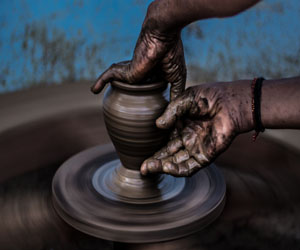 Techniques And Materials: Traditional pottery is characterized by a profound connection between the potter and the materials. Typically, it involves handbuilding techniques such as coiling, pinching, and slab-building, as well as the use of locally sourced clay and other natural materials. The techniques and materials used are often passed down through generations, preserving the authenticity and heritage of each style.
Techniques And Materials: Traditional pottery is characterized by a profound connection between the potter and the materials. Typically, it involves handbuilding techniques such as coiling, pinching, and slab-building, as well as the use of locally sourced clay and other natural materials. The techniques and materials used are often passed down through generations, preserving the authenticity and heritage of each style.
Regional Variations: One of the most compelling aspects of traditional pottery is its regional diversity. Different cultures have developed their own unique styles, forms, and designs. For example, the delicate blue and white porcelain of China is world-famous, while the intricately painted talavera ceramics of Mexico are celebrated for their vibrant patterns. Native American tribes have their distinctive pottery traditions, often incorporating symbolism and motifs reflecting their cultural heritage.
Cultural Significance: Traditional pottery is not just a craft; it is a reflection of cultural identity and history. Many traditional pottery forms have spiritual, ceremonial, or ritualistic importance within their respective cultures. In Native American Pueblo communities, for instance, pottery is often used in religious ceremonies, and the designs have deep cultural significance. In Japan, the tea ceremony is closely tied to the creation and appreciation of traditional pottery, such as the iconic Raku ware.
A Time-Honored Craft With Global Diversity
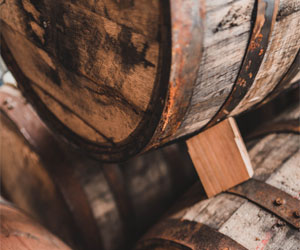 Asian Brewing Traditions: Asia boasts an array of distinctive brewing traditions. Sake, a Japanese rice wine, is an integral part of Japanese culture, with centuries of tradition and craftsmanship. China, on the other hand, has a rich history of brewing rice-based beers like Qingdao, which are now appreciated globally. South Korea is known for its popular rice-based brew, Makgeolli, a traditional and lightly sparkling beverage.
Asian Brewing Traditions: Asia boasts an array of distinctive brewing traditions. Sake, a Japanese rice wine, is an integral part of Japanese culture, with centuries of tradition and craftsmanship. China, on the other hand, has a rich history of brewing rice-based beers like Qingdao, which are now appreciated globally. South Korea is known for its popular rice-based brew, Makgeolli, a traditional and lightly sparkling beverage.
Beer As A Cultural Symbol: Brewing traditions often intertwine with cultural, religious, and social customs. In places like Germany, beer gardens and Oktoberfest celebrations are iconic social gatherings. In Mexico, Day of the Dead festivals include offerings of beer to honor the deceased. Throughout history, beer has played a significant role in ceremonies, rituals, and community bonding.
Global Fusion And Innovation: The brewing world is a global stage where traditions blend and evolve. Brewers often take inspiration from different regions and styles, resulting in fusion brews that incorporate elements of various brewing traditions. For example, the emergence of "Belgo-American" beers combines the brewing traditions of Belgium with the innovative spirit of American craft brewing.
Brewing Traditions In The Modern Era: In today's interconnected world, brewing traditions are shared and celebrated globally. The rise of international beer festivals, beer competitions, and the craft beer movement is a testament to the enduring appeal of brewing. It's a dynamic and ever-evolving craft where old meets new, and traditions find new life in the hands of innovative brewers.






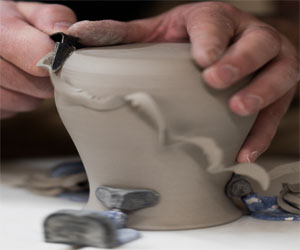
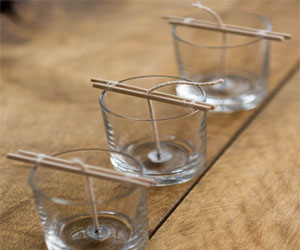
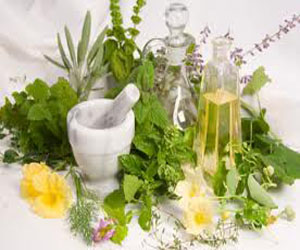

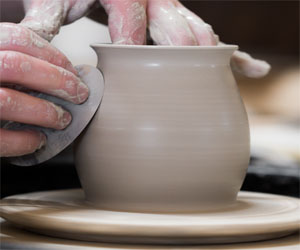
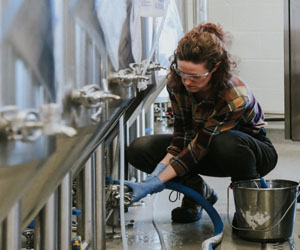
Savoring The Subtle Pleasures
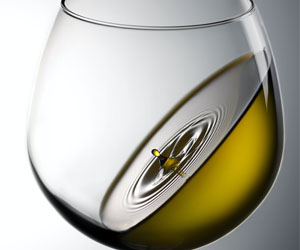 Smell: The olfactory sense is crucial in wine tasting. Swirl the wine gently in your glass to release its aromas and then take a moment to inhale. Note the wine's bouquet, identifying various scents like fruit, flowers, spices, or oak. The aroma can provide insights into the wine's age, origin, and quality.
Smell: The olfactory sense is crucial in wine tasting. Swirl the wine gently in your glass to release its aromas and then take a moment to inhale. Note the wine's bouquet, identifying various scents like fruit, flowers, spices, or oak. The aroma can provide insights into the wine's age, origin, and quality.
Taste: This is the heart of the wine tasting experience. Start with a small sip, allowing the wine to coat your palate. Assess the wine's flavors, acidity, sweetness, and tannins. Look for complex layers of taste, from the initial impression to the finish. Consider the balance and harmony of the wine's components.
Touch: The tactile sensation of wine is an often-overlooked aspect. Assess the wine's body or weight on the palate. Is it light, medium, or full-bodied? The texture should be smooth and pleasing, with the right level of astringency from tannins.
Sound: While it might not be as prominent, the sound of wine plays a role in the overall experience. When you slurp the wine, the sound can provide clues about its viscosity and body. Experienced tasters often make a slight slurping sound to aerate the wine as it passes through their palate.
The Art Of The Swirl And Sip: The gentle swirl of the wine in the glass releases its aromas, allowing you to take in the full bouquet. This practice aerates the wine, which can enhance the aromas and flavors.
Taking small sips and holding the wine in your mouth allows for a thorough evaluation of its taste and texture. The art of wine tasting involves paying attention to the wine's complexity, noting the interplay of fruit, acidity, and tannins.